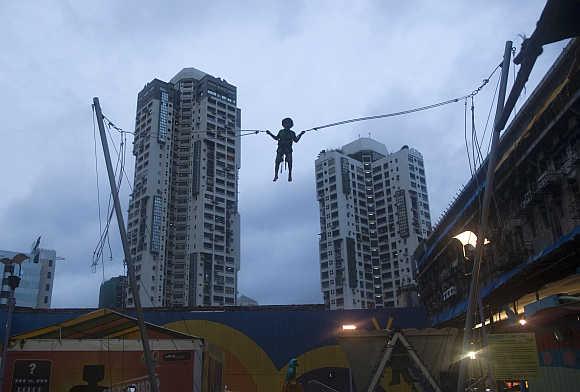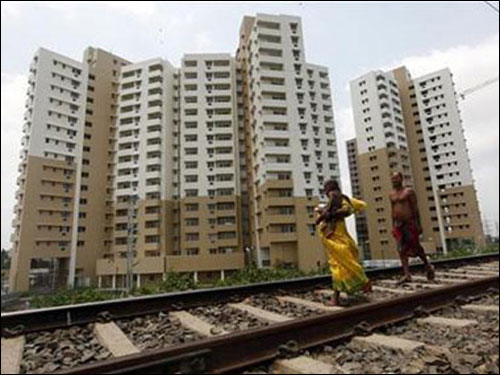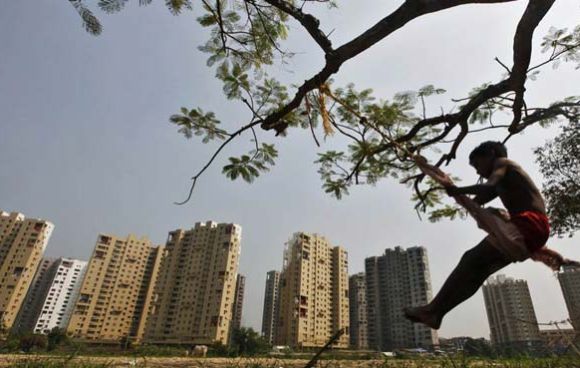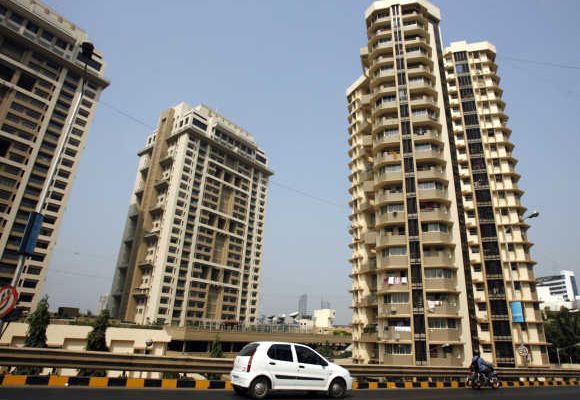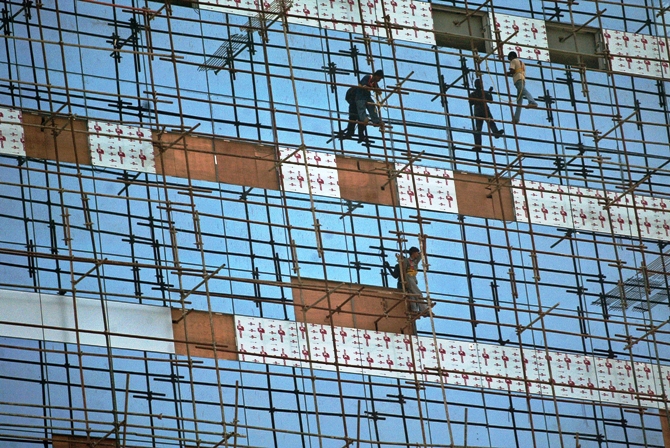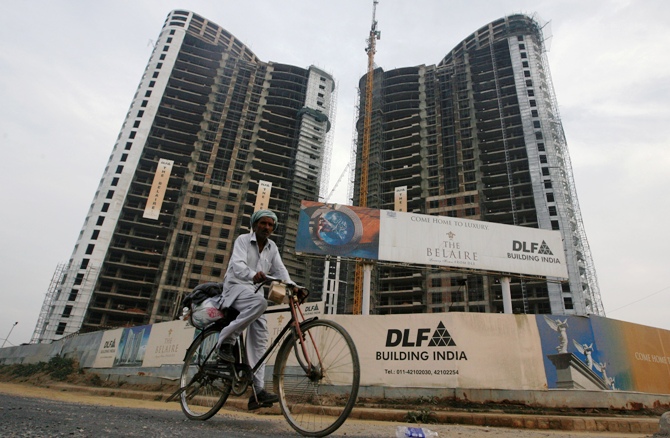 | « Back to article | Print this article |
Why new flat for your old one needs a lot of homework
Anand Apartments in Versova, Mumbai, is a 40-year-old residential building.
The residents plan to redevelop it, which means pulling down the existing structure and constructing a bigger one in its place.
The initial discussions are over and they have to finalise the tender documents and appoint a developer.
For now, though, they’ve kept aside the redevelopment plan.
Sandeep Bhagve, a member of the housing society, says they slowed the process because of political processes and Supreme Court rulings.
He asks, “What if the design requirements change after the builder has started work?
“The builder can say it is not possible to make the changes and just stop the work.
The image is used for representational purpose only
Click NEXT to read further. . .
Why new flat for your old one needs a lot of homework
“Once we are out of the building, we will not be able to do anything.”
This is the case with several housing societies in Mumbai.
There are also cases where residents have shifted to rented homes, their old building has been pulled down and the construction has stopped.
While uncertainty in Mumbai’s real estate market is a reason for redevelopment projects being stalled, changes in policies related to open space are other reasons, says Ashutosh Limaye, head, research and real estate intelligence service, Jones Lang LaSalle.
Last month, the Supreme Court said the open space for a building has to be at the ground level and be open to the sky.
This means that open space at the podium level will not be considered, as was allowed earlier.
The image is used for representational purpose only
Click NEXT to read further. . .
Why new flat for your old one needs a lot of homework
According to the Development Control Regulation of 1991, a mandatory 15-25 per cent of space has to be kept open at ground level, depending on the plot size for every building.
But in January 2012, an amendment to the DCR said permitted builders to construct the open space at the podium level.
However, the SC ruling insists the open space has to be at the ground level only.
This has led to a problem and builders have to redesign the building’s plan in order to get approval.
According to newspaper reports, the municipal corporation in Mumbai is also going slow on approving projects for this reason.
The image is used for representational purpose only
Click NEXT to read further. . .
Why new flat for your old one needs a lot of homework
The SC also said land plots up to 600 sq metres must have a minimum six-metre passage, unless adjacent to a road.
This is for safety, as otherwise fire engines will find it difficult to reach the building in an emergency.
All these changes will push up cost for the builder.
As a result, they might be forced to cut the size of the flats, to bring down the construction cost.
If they stick to the original flat size as promised earlier, it might mean adding a couple of floors to the building, which will push up construction cost.
The image is used for representational purpose only
Click NEXT to read further. . .
Why new flat for your old one needs a lot of homework
So, many projects that had started are stalled and others are delaying plans.
There is another rule which says that in case of plots of 2,000 sq mts or more, 15 per cent of the space should be reserved for economically weaker section.
The developer has to construct smaller flats for people of lower income groups.
This can also lead to an increase in construction costs for builders.
Shveta Jain, executive director, Cushman & Wakefield, says: “Possible redevelopments are delayed or stalled due to conditions such as discontentment of the current residents, lack or delay of approvals, etc.
More than economic slowdown, increased construction cost can be a deterrent for builders to undertake redevelopment projects as the profit margins are reduced."
The image is used for representational purpose only
Click NEXT to read further. . .
Why new flat for your old one needs a lot of homework
If the project gets stuck, residents have no other recourse but to take the legal route, in which case it could be a long-drawn battle.
So, the agreement has to spell out the various clauses, including default or delay of delivery, says Jain.
With ready reckoner rates going up in Maharashtra from this month, societies going for redevelopment are facing a double whammy, says Limaye.
Property tax is calculated on the age and amenities of the building.
So, the original owners, who would get new and bigger flats, will have to pay property tax at the new rates.
Since ready reckoner rates have gone up between five and 20 per cent, the new stamp duty will also be calculated at these revised rates.
The image is used for representational purpose only
Click NEXT to read further. . .
Why new flat for your old one needs a lot of homework
But this is borne by the builder and not by residents in the case of redeveloped flats.
So, while drawing up the agreement, residents should include a clause to this effect.
There is yet another cost implication of stamp duty after ready reckoner rates go up, says Limaye.
The fungible Floor Space Index rates are based on ready reckoner rates.
So, when these go up, the premium the developer pays for the FSI also goes up.
This will lead to an increase in input cost for developers.
This is perhaps another reason why builders are not so keen on redevelopment projects, right now.
The image is used for representational purpose only
Click NEXT to read further. . .
Why new flat for your old one needs a lot of homework
“The feeling is that as property rates in Mumbai have moved up very modestly, this hike in ready reckoner rates will put additional burden on flat buyers,'' Limaye.
In fact, in some places, property rates have actually come down and could be lower than the revised ready reckoner rates.
In such cases, the home buyer will have to pay stamp duty at rates more than he has paid for the flat.
CHECKLIST
Things to do before redevelopment:
- Get a valuation of the property proposed to be redeveloped. This is essential to ensure the value quoted by the developer is at par
- Check the reputation and background of the builder
- Draw up proper agreements with every shareholding member
- Agree upon the rental payment schedules
